SHOT TO REMEMBER
By Rob Feld
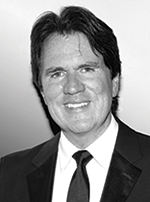 It was the fall of 2000 and movie musicals had fallen out of fashion if they weren't animated. Nevertheless, after a hit Broadway production of Cabaret and an Emmy Award-winning television adaptation of Annie, Rob Marshall was called in to Miramax to discuss adapting Rent. Before the conversation could begin, however, Marshall launched into a pitch to let him take on Chicago, the cynical Jazz Age story of cabaret dancer Roxie Hart, who murders her lover, Fred Casely (Dominic West).
It was the fall of 2000 and movie musicals had fallen out of fashion if they weren't animated. Nevertheless, after a hit Broadway production of Cabaret and an Emmy Award-winning television adaptation of Annie, Rob Marshall was called in to Miramax to discuss adapting Rent. Before the conversation could begin, however, Marshall launched into a pitch to let him take on Chicago, the cynical Jazz Age story of cabaret dancer Roxie Hart, who murders her lover, Fred Casely (Dominic West).
Finding a vision for such an adaptation had thus far proved elusive for the studio. "I had seen some scripts and what they were doing with it," says Marshall, director of the upcoming Mary Poppins Returns. "They either excised numbers or tried to take a concept musical and turn it into a traditional book musical. They weren't embracing the fact that these were numbers that were created to take place on a stage. I think they thought it might feel too stagey, and not enough like a film." But Marshall reminded them that practically all the musical numbers in Bob Fosse's Cabaret took place on a 'stage.'
Marshall's concept was to set the production numbers in a sort of vaudeville fantasy world. His pitch, which Marshall later developed further with his collaborator Bill Condon, also included how to transition seamlessly between reality and Roxie's fantasy, thus making the production numbers feel motivated. His conception won him the Miramax project within 24 hours and, ultimately, the DGA's Feature Film Award and an Oscar for Best Picture.
"We Both Reached for the Gun" is a pivotal number during which Roxie (Renée Zellweger) learns to trust her slick and savvy lawyer, Billy Flynn (Richard Gere). During the song, he creates a media circus, concocting the sensational story that Fred was killed as Roxie, a sympathetic innocent seduced by liquor and jazz, tried to leave him.
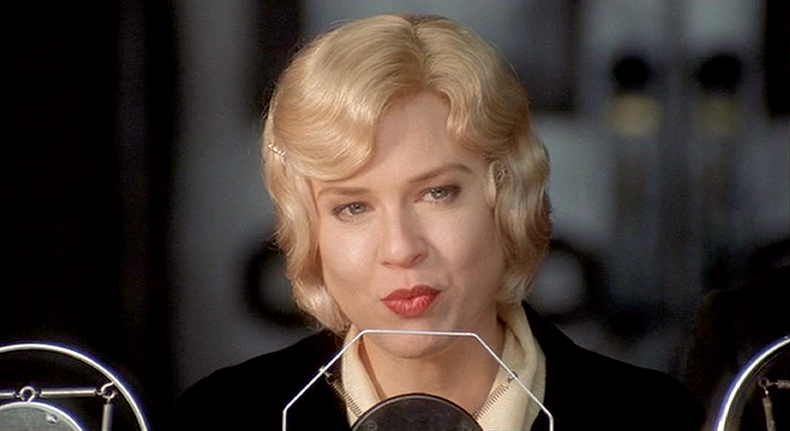
This is the press conference where Roxie blows up Billy's plan within seconds. I wanted the camera to reach into her face, nice and tight, to see that she thinks she knows what she's doing when she doesn't. The idea was to style her as virginally as possible for the "show" they're putting on, with cute bobbed hair and Kewpie doll makeup. Dion Beebe (cinematographer) and I chose to make the lighting feel as natural as possible, but we used filters to lend that late 1920s warmth. This moment launches the musical number. How do you justify someone singing in this type of musical? You define a strong conceptual idea at the beginning and stay true to it; for us it was creating this vaudeville world.
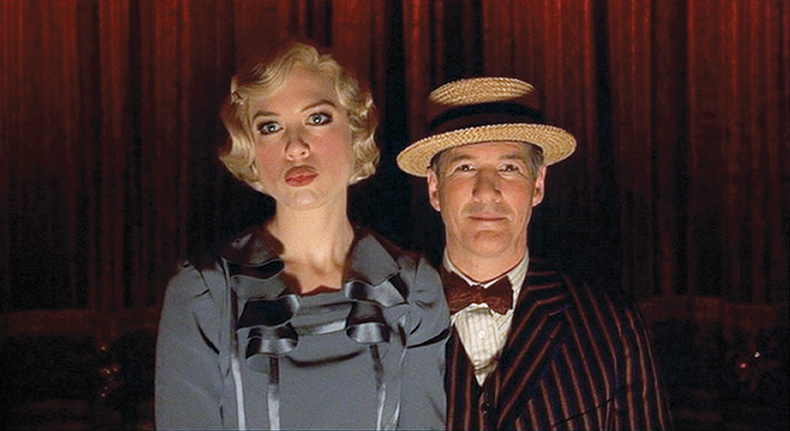
Now we're on stage and Roxie has literally become the dummy to Billy's ventriloquist. Her look has changed drastically to make her as artificial as possible. Billy's style is classic vaudeville for sure, with a little bit of rouge for theatricality. Its look is enhanced by vaudeville uplight, so that it feels a little macabre. This shot comes at the end of a long dolly push-in that went flying down the center aisle. We ramped camera speed to really slam into the number. I remember we did it a bunch of times, trying to make it smooth enough for the speed ramp.
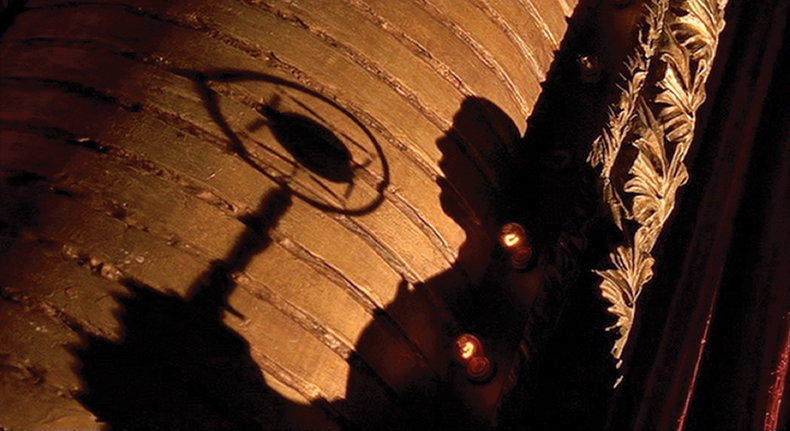
Taye Diggs played the band leader whom Roxie projects into her fantasies to introduce every number. Each time we found unique ways to present him in a surreal way. This silhouette was something we found in the moment against the proscenium. To make it as surreal as possible, we shot from this raked angle where the microphone was bigger than the human silhouette. I asked John Myhre (production designer) to create a theater that resembled a third-rate vaudeville house, so as you see here, there are missing lightbulbs, the curtain is tattered and pieces of the proscenium are broken off.
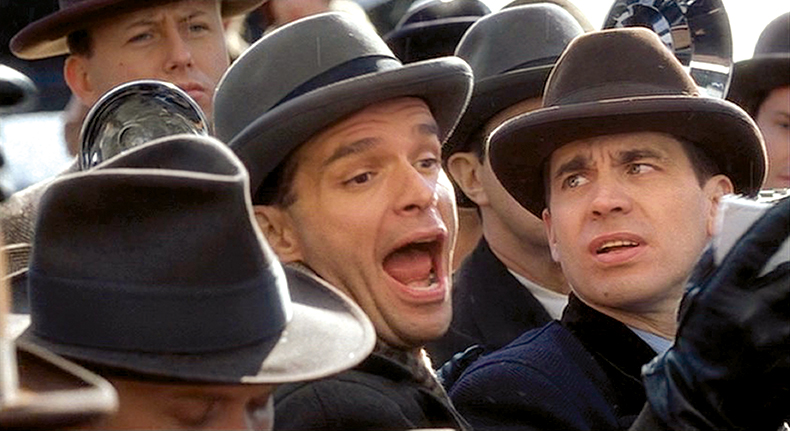
My plan here was to completely fill the frame, in order to feel the manic energy of the press. Most of the camerawork here was handheld, to feel amongst them. The reporters in this frame (played by Rick Negron, Shaun Amyot and Cleve Asbury) are actor/singer/dancers, so that they could appear in both the reality and stage portions of the number. We had playback here and the actors had ear wigs, so it could be recorded live and then placed into the musical number. I had to amp up the "reality" section here a bit, in order to blend more seamlessly with the vaudeville number we were intercutting with. Lots of flashbulbs here; anytime I needed a cutting point, flash and you're onto the stage. That helped a lot.
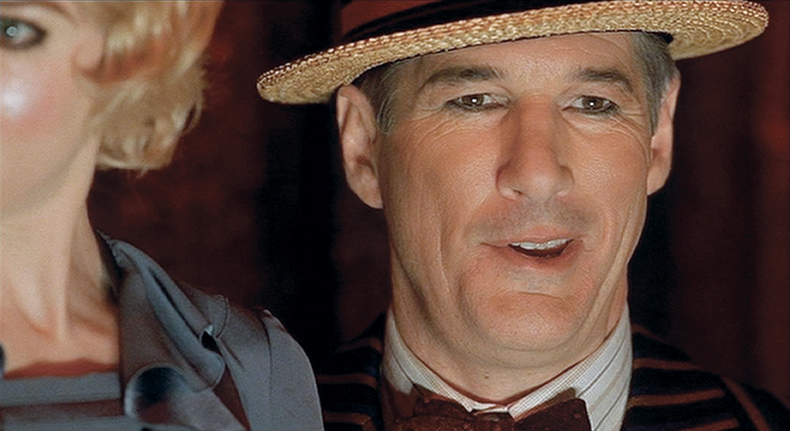
With this close-up of Billy, you get to see the inner workings of his "act." Richard delivers a real tour-de-force here, having to sing Roxie's words, as well as his own. I loved being able to catch Billy's eyes while he tries to pull this charade off.
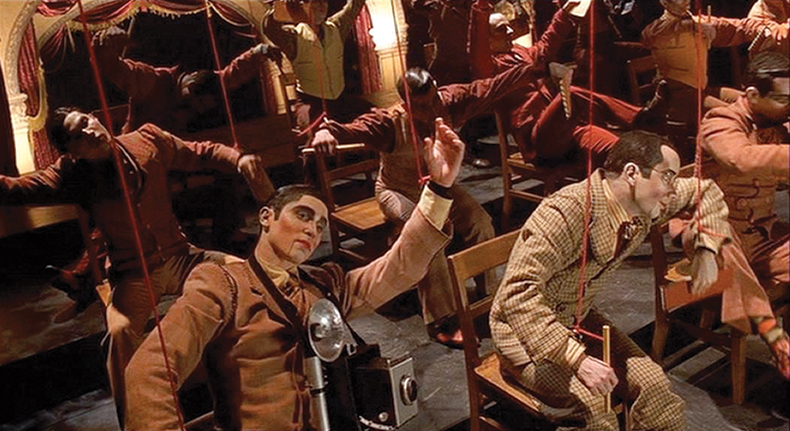
At this point the press corps comes to life as marionettes on stage. The red bungee cords serve as marionette strings and are connected to steel hooks sewn into their costumes. The big question was, "Do we expose that?" I said Yes, I want to see all the mechanics of it. So, our costume designer Colleen Atwood revealed their jacket seams so they have that puppet feel of hand-sewn costumes. I had four or five cameras working with each setup, and this shot was captured by a camera up in the theater's box, grabbing it with a long lens. John DeLuca (co-choreographer) and I worked hard to create choreography that was puppet-like: isolated moments—just one body part would move, then another—all meant to create an angular and unique dance vocabulary.
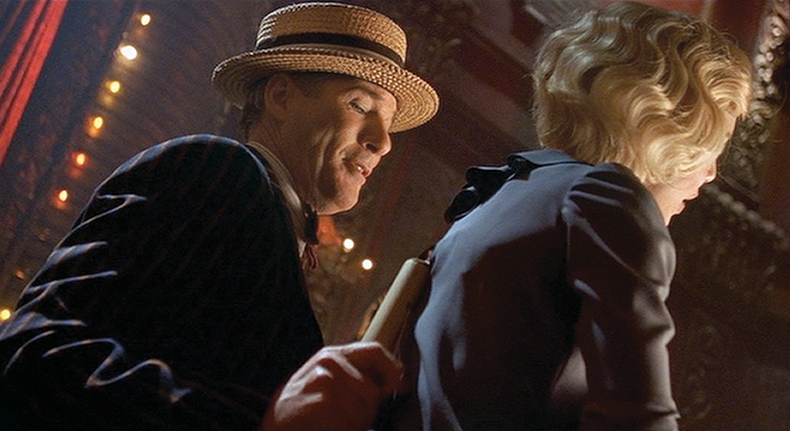
Seeing Roxie's puppet mechanics in this one quick shot reveals the inner workings of Billy's "act," something you can more easily achieve on film. Every single moment has to enhance the story in some way. Here we're understanding in a musical number how Billy Flynn manipulates his clients. These Dutch angles were important to keep the theatrical world askew. The goal was to find the theatricality in the "real world" and the story in the "stage world" so it all melds into one seamless number.
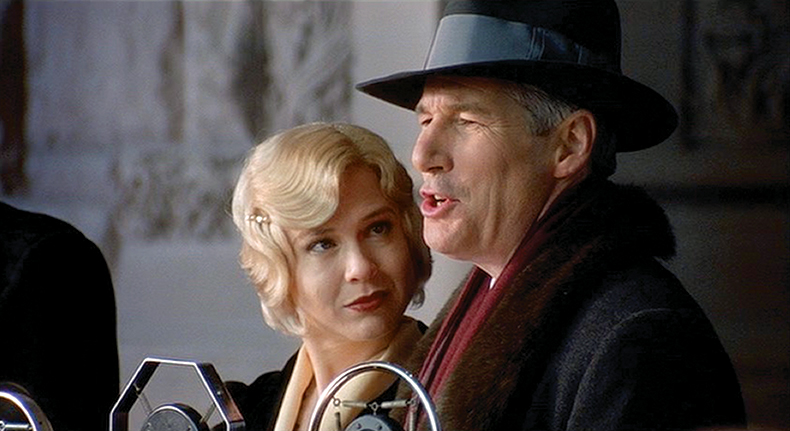
After Billy shuts Roxie down and doesn't let her speak, Roxie looks at Billy like, What are you doing? This is my moment. You have to keep the story running through a musical number and advance character development, so you need moments like this to cut to. I wanted to create a language for the film where the fast cuts don't give the audience time to question the cutting back and forth between the two different worlds. You just accept it.
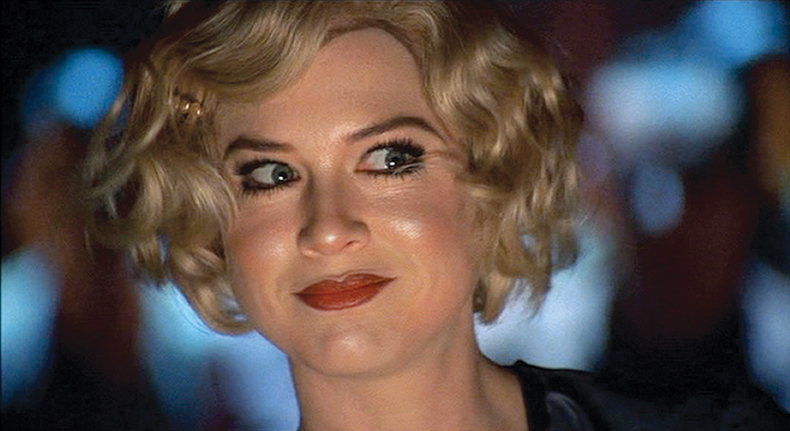
Roxie realizes the press is starting to embrace the idea that they "both reached for the gun." You see the glimmer of triumph in Roxie's eyes. Once again, this is something you can achieve on film that's almost impossible to achieve on stage—a crazy close-up like this that puts you inside a character and what she's feeling.
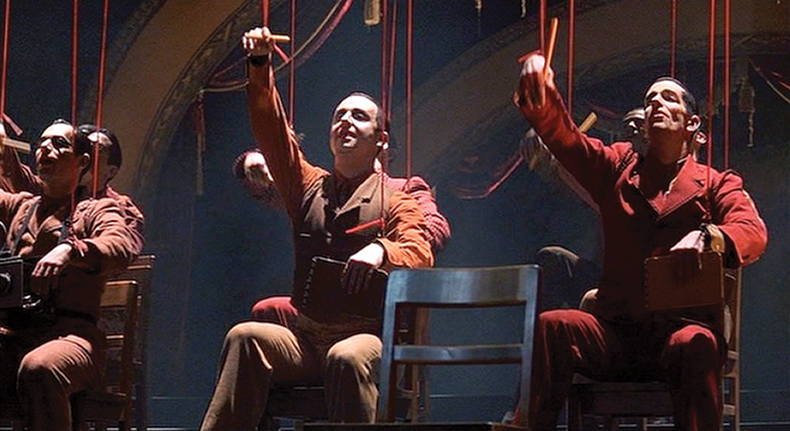
The reporters are fully coming on board, having swallowed Billy's idea, hook, line and sinker. It's reflected in the choreography, everybody now moving in unison. That was intentional, because up to this point there's no unison in the dance at all. This part starts quietly and simply, before growing into a media circus frenzy.
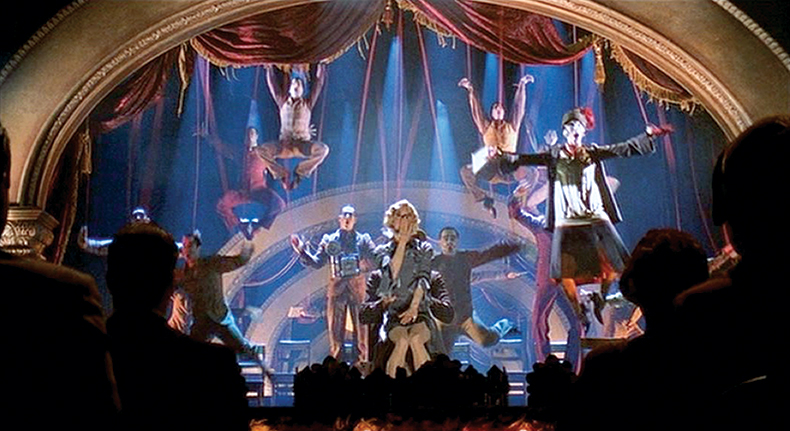
All hell breaks loose on every level: choreographically, story-wise, character-wise, lighting-wise. This is a master shot where we're able to see the full stage picture erupting. The reporters are seen leaping and doing acrobatic flips, while Mary Sunshine (Christine Baranski) literally flies across the stage as Billy bounces Roxie on his lap in a state of euphoria. In a production number, you have to earn those moments, and here we have. I'm cutting, cutting, cutting, cutting and you're getting the insanity of what's happening on the stage, plus supporting what's happening in the story.
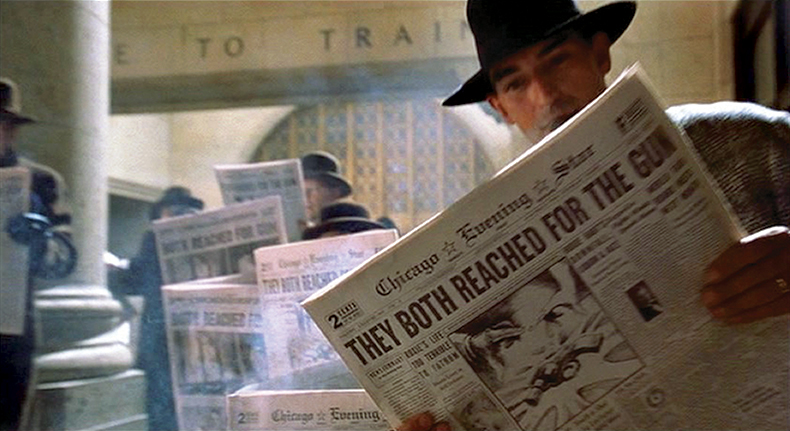
Here you're seeing the result of Billy's plan in reality, but it's still part of a musical number, so it can't be static; it has to have energy. It was actually shot by the second unit director John DeLuca on a fast-moving dolly. The composition of the frame is designed to be cram-filled with different angles, shapes and layers.
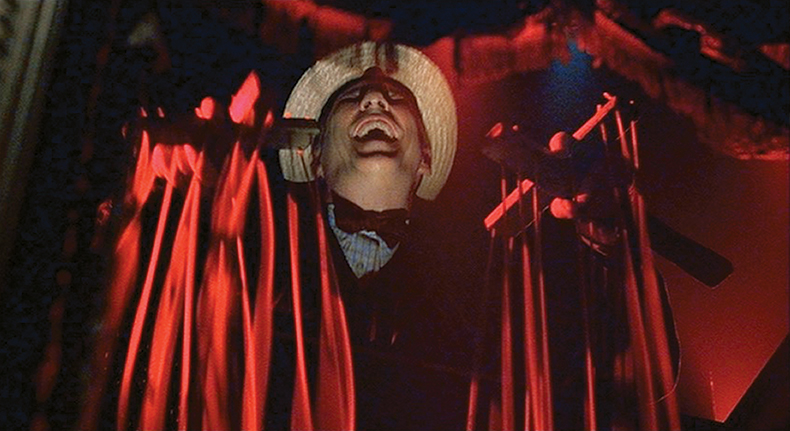
This was a special set we created as a mini version of our theater, complete with proscenium wings and show curtain. This moment where Billy laughs is actually my favorite in the entire number. It's the joy and triumph he displays as he wins over the press as the "master puppeteer"!
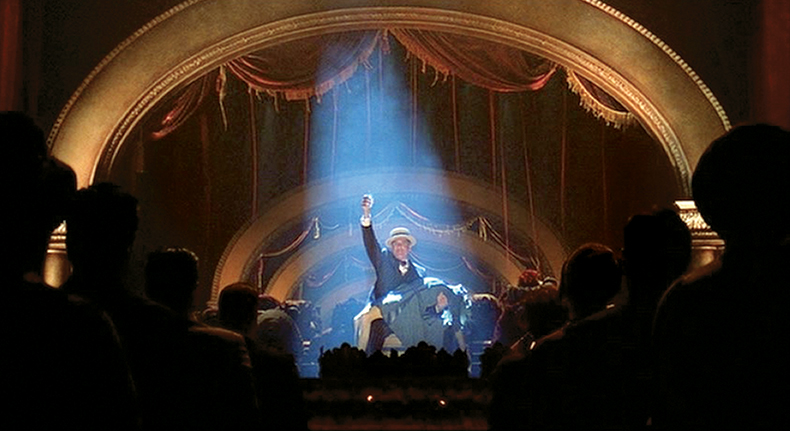
The vaudeville number comes to an end in a final tableau. You see the full stage picture here: the frozen audience in silhouette, all four proscenium arches in perspective, the reporters as lifeless marionettes, and, of course, Billy triumphant with Roxie, "the dummy," collapsed in his arms. It's a classic, formal composition. I'll never forget when we first showed this to an audience in a test preview and the place erupted into applause. I was honestly so shocked to hear that kind of reaction in a movie theater.